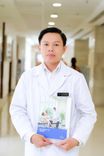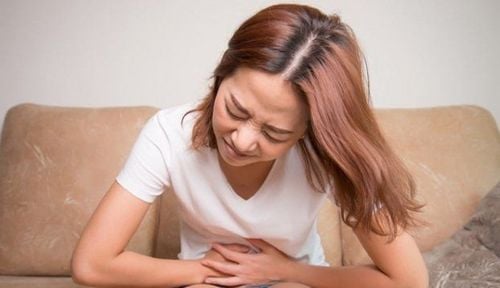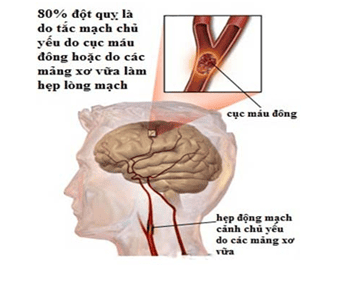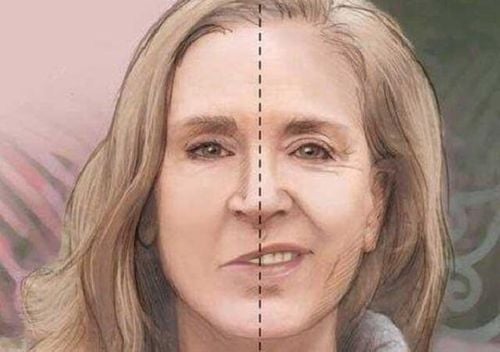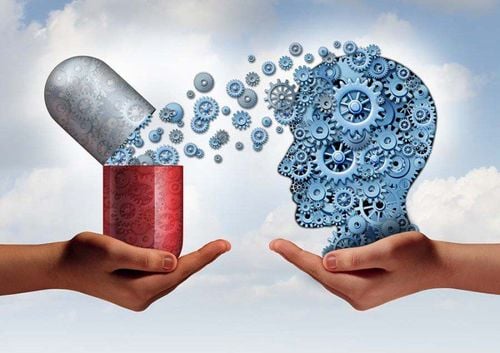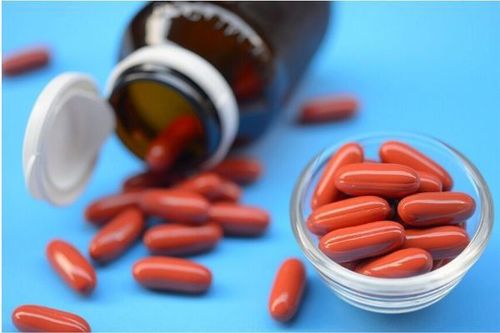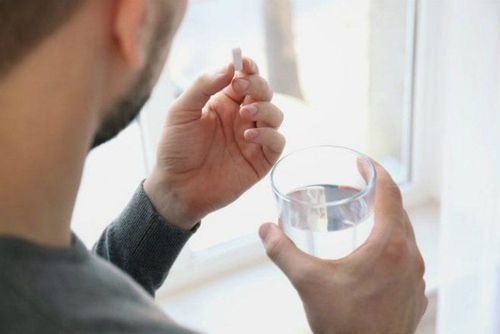This is an automatically translated article.
Posted by Doctor Dao Hong Nam - Traditional Medicine Doctor - Traditional Medicine Unit - Vinmec Times City International Hospital
Peripheral cranial nerve VII paralysis (facial paralysis) is a syndrome of nerve damage to the VII nerve that causes a decrease or loss of motor movement in the muscles of the face. Currently, there are many methods to treat this disease, but acupuncture is always the first choice due to its safe treatment effect and good results.
1. What is peripheral 7th nerve palsy?
VII peripheral nerve palsy (facial paralysis) is a syndrome of nerve damage to the VII nerve that causes decreased or absent movement of the muscles in the face (total hemifacial paralysis). According to Traditional Chinese Medicine, peripheral nerve palsy is described by the name "wholesome speech" and leprosy. The disease can occur at any age and has many causes.
2. Causes of 7th nerve paralysis
Causes of 7th nerve palsy according to modern medicine are divided into 2 main causes:
Primary facial paralysis: facial paralysis due to cold infection (Bell's palsy) Secondary facial paralysis: inflammation (otitis media) mastoiditis, cranial neuritis, Guillain-Barre syndrome, periarteritis nodule, shingles ganglion, neuritis VII...), Traumatic (traumatic skull fracture, ear surgery complications, cerebral infarction ...), tumors (cerebral pons, parotid adenomas, Kahler disease, skull base metastases...). Causes of 7th nerve palsy according to Traditional Medicine:
Outsiders: Wind, cold, and heat often have symptoms corresponding to Bell's palsy, facial paralysis due to inflammatory causes according to Modern Medicine. Internal and external abnormalities: Injuries to the head and face, and some other causes, are described in a relatively consistent condition with secondary facial paralysis in Modern Medicine.
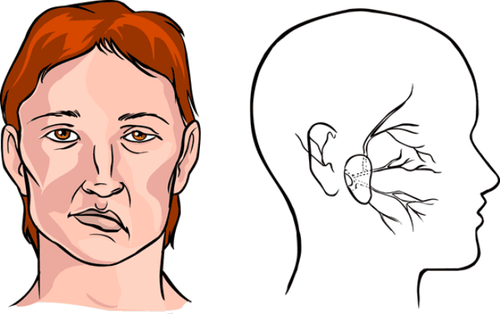
3. Symptoms of Diseases Modern Medicine
7th peripheral nerve palsy often has sudden onset of symptoms:
Total paralysis on one side of the face, loss of forehead wrinkles, blurred nasolabial folds, difficulty in eating and drinking, stagnation of food and water on the paralyzed side, The patient cannot do some movements such as whistling, blowing fire. Charles - Bell (+): eyes do not close tightly on the paralyzed side When the face is still, the face becomes dull, the nucleus deviates to the healthy side Loss of taste 2/3 before the tongue Some cases have pain behind the ears before paralysis 1 -2 days, may be accompanied by tinnitus, dry eyes, lacrimation. SEE ALSO: Treatment of peripheral nerve palsy with physical therapy
4. Diseases according to Traditional Medicine
Theoretical basis of Traditional Medicine: According to traditional medicine, due to cold weather, invasive heat or trauma, trauma to the head and face causes the qi and blood of the meridians in the head and face to stagnate and cause disease. . Types of diseases according to Traditional Medicine include:
Leprosy, cold, meridians: usually include symptoms of paralysis of 1⁄ 2 face and other symptoms such as modern medicine accompanied by patients with fear of wind, fear of cold, moss thin white tongue, edematous pulse. The disease usually starts when the weather changes to cold or the person becomes ill after the patient has caught a cold. Wind heat and meridians: Symptoms are similar to facial paralysis caused by wind and cold, but the patient has fever, fear of wind, fear of heat, thin white tongue moss, and edematous pulse. Meridian stasis: paralytic symptoms appear after trauma or after procedures in the maxillofacial region. Currently, there are many methods of treating peripheral palsy with internal medicine such as: anti-inflammatory drugs, increasing nerve conduction, physical therapy, rehabilitation and traditional medicine (acupuncture, acupressure massage, etc.). .). But acupuncture is always the method of first choice due to its safe treatment effect and good results (≥90% of patients recover completely). Currently, there are many different acupuncture techniques such as: electro-mac acupuncture, electro-acupuncture, warm-acupuncture... Depending on the cause of the disease, the physician uses different acupuncture methods and acupressure points (due to leprosy). Welding uses the method of magnetizing, because of the heat, the method of electromagnetism is used).
MORE: Is acupuncture good for treating peripheral nerve injury, number VII?
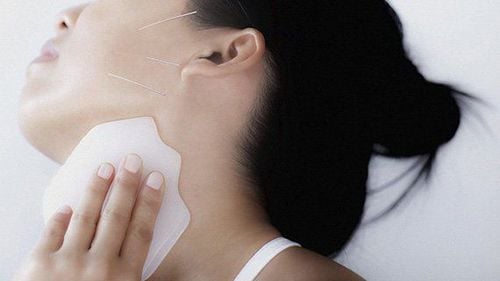
5. Electro-acupuncture procedure for the treatment of peripheral 7th nerve palsy
Electroacupuncture is a method of using a certain electric current to act on acupuncture points to cure diseases. This is a treatment method that combines acupuncture (Traditional Medicine) and electric current (Modern Medicine). Because of its many advantages, electroacupuncture is considered the main method of acupuncture today.5.1. Point
Assign patients with primary facial paralysis (Bell's palsy)
5.2. Contraindications
Patients with secondary facial paralysis who have not been treated stably have neuropsychiatric symptoms and related systemic symptoms.
5.3. Commonly used acupoints
Toan Tru, Tinh Minh, Duong Bach, Ngu love, Thai Duong, Quyen Lieu, Nghinh Huong, E Phong, Thu Tuong, Dia Thuong, Giap Xa, Hop Coc.
5.4. Prepare necessary medical supplies
Sterile acupuncture needles (now usually use one-time needles), cotton, alcohol, pince, bean trays, two-frequency electro-acupuncture that works well, shockproof box, blood pressure monitor, headphones.
5.5. Technical implementation
Locate the acupoints, disinfect the skin at the location of the acupoints, in turn conduct the technique of inserting the needle into the acupuncture points according to the determined formula. Install electrodes on the acupuncture needles (the position of the conductive connections on the acupuncture needles on each acupuncture point depends on whether the treatment is tonifying or cholera). Turn on the switch to run the machine, see the indicator light, turn the knob to adjust the electric capacity to increase slowly, reaching the required level of voltage and intensity to adapt to each patient. At that time, the patient feels comfortable or a little tense but tolerable. Monitor patients during treatment, prevent complications and possible complications. The most common complication is the prickling word: the patient is restless, dizzy, dizzy, sweating, rapid pulse, pale face.
Treatment of acupuncture words: Turn off the acupuncture machine, remove the needle, let the patient lie down, warm up, explain and encourage the patient's spirit, monitor the patient's pulse and blood pressure.
The time to conduct an electro-acupuncture is usually 20-30 minutes, acupuncture can be carried out until the patient recovers, then the treatment is over.
Traditional Medicine Unit - Vinmec International General Hospital was established based on the quintessence and inheritance of two traditional and modern medicine backgrounds in examination and treatment, with the aim of providing choices choose the best for the customer. Here with a team of Doctors, Doctors have many years of experience in the field of Traditional Medicine. By the combination of traditional and natural medicinal methods, along with non-drug treatments such as nourishing, acupuncture, massage, acupressure... The unit has successfully treated. for many patients with different diseases.
Please dial HOTLINE for more information or register for an appointment HERE. Download MyVinmec app to make appointments faster and to manage your bookings easily.
